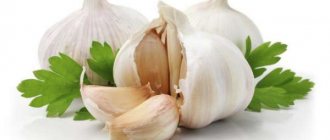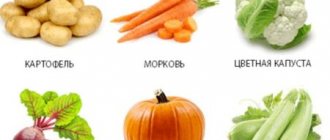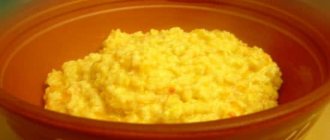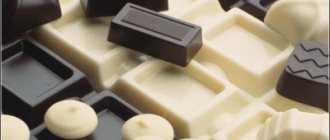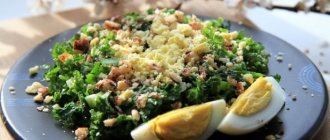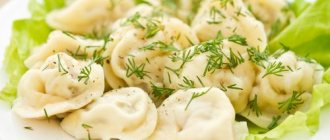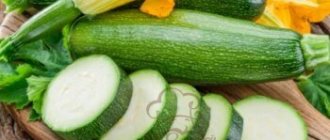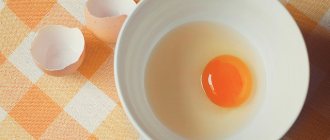Pancreatitis is a common disease of the pancreas among the population of different age groups. In order not to provoke an exacerbation of pancreatitis, you need to follow the principles of proper nutrition, which will not harm the inflamed pancreas. The question often arises whether sausages are allowed in the diet for pancreatitis, which are found in abundance on supermarket shelves and are to the taste of many. You can figure this out by studying the composition of these sausages and nutritional features during the inflammatory process in the pancreas.
Boiled sausage for pancreatitis
Once the acute phase of chronic pancreatitis has passed, inflammation of the pancreas and acute pain have subsided, in agreement with the attending physician and after consultation with a gastroenterologist, high-quality boiled sausage . The best option would be boiled sausage, made at home from lean meat, with a minimum amount of spices and salt, without preservatives, monosodium glutamate, and other food additives. However, for obvious reasons, for the vast majority of people suffering from pancreatitis, such sausage is classified as inaccessible.
Thus, the patient is forced to be content with the assortment of boiled sausages offered by chain food retailers, small shops, farm stands and bazaars. In the realities of today, markets where the products of private individuals are presented should not be considered in relation to dietary nutrition due to the high risks of purchasing low-quality products produced by an unknown manufacturer, from unknown raw materials, using questionable technology.
Any types and varieties of smoked, semi-smoked and boiled-smoked sausages are categorically not recommended for any form of pancreatitis.
In principle, taking into account the embryonic state of domestic farming, the same decision should be made in relation to products sold through the so-called. branded farm stores. Almost all of them have nothing to do with farming, but use this brand solely for marketing purposes to attract customers and increase sales.
Large grocery supermarkets remain. The most popular varieties of boiled sausages presented in them are: Doctorskaya, Lyubitelskaya, Dietary and Milk. The diet for pancreatitis places certain demands on sausage. Preference should be given to varieties of boiled sausage that have the lowest percentage of fat and minimum calorie content. As a rule, this condition is most satisfied by Diet boiled sausage. For most manufacturers, the percentage of fat in it does not exceed 13% with a minimum calorie content.
The industry produces boiled sausage by thermal processing, at a temperature of 80-85 °C, of salted minced meat, to which, in addition to meat and animal by-products, many manufacturers also add soy, sometimes milk powder and chicken eggs. Any type of boiled sausage contains a large amount of water, as a result of which its shelf life is significantly limited.
Boiled sausage and chronic pancreatitis
If a patient has an exacerbation of chronic pancreatitis, then he can also eat boiled sausage only during the period when the inflammation subsides. Moreover, only those types of sausage are allowed for food in which:
- relatively few spices and seasonings;
- minced sausage is thoroughly chopped;
- there is powdered milk and chicken eggs.
Therefore, doctor’s sausage is first included in the diet, and after remission is achieved, dairy and diabetic sausages are allowed. The latter is especially indicated when the ability of the pancreas to produce pancreatic enzymes and insulin decreases, since it does not contain sugar and starch.
However, you should not get too carried away with this product; it is even better to replace it with a piece of boiled lean meat. After all, in Russia for a long time no GOSTs have been in force, dictating strict adherence to the recipe approved and verified by scientists (according to them, boiled sausage must contain 30% natural meat). Therefore, some manufacturers include in its composition all kinds of substitutes, protein concentrates, soy, saltpeter, and E additives, which make the product cheaper. The leader in counterfeits is the famous doctor's sausage.
When purchasing boiled sausage, you need to carefully study its components; it is better that it includes meat (pork, beef) of the highest or first grade and is light pink in color (the intensity of the color is directly related to the amount of sodium nitrite added).
In addition, you need to eat this sausage within the next few days, because it is a perishable product.
The maximum daily portion of sausage for chronic pancreatitis:
- acute phase – 50 g;
- stable remission phase – 50 g.
- For acute pancreatitis - 50 g of boiled sausage (only during the rehabilitation phase).
Assessment of the suitability of boiled sausage for consumption:
- for acute pancreatitis – plus 2;
- with exacerbation of chronic pancreatitis - plus 4;
- in the remission phase of chronic pancreatitis - plus 7.
Pancreatitis is a common disease of the pancreas, which many people have heard about in the age of on-the-run snacking, fast food and frequent overeating. A disease characterized by pain, nausea, vomiting and other unpleasant symptoms causes a lot of inconvenience to a person. It is possible to get rid of such a list by strictly following the treatment and diet prescribed by your doctor. Most patients readily accept prescribed medications, and the treatment table no longer evokes “enthusiasm.”
The question often arises whether it is allowed to eat low-fat boiled sausages for pancreatitis. The product does not belong to strictly prohibited pickles or fried, spicy, smoked, baked and sweet foods. Some people even consider the boiled product to be dietary and beneficial for the body.
Which sausage to choose for the diet table in the remission stage of chronic pancreatitis
Formal recommendations for selecting cooked sausage that is acceptable for dietary use include following the following criteria:
- According to the information on its label, the meat must be premium or 1st grade.
- The color of the sausage should be a natural light pink shade. No bright or intense colors that are the result of sodium nitrite.
- Absence of sharp and suspiciously rich odors.
- The sausage contains a relatively small amount of spices, seasonings and additives.
- Unsweetened cookies, crackers, marshmallows.
- Minimal fat and calorie content.
- Contains milk powder and chicken eggs.
- The thorough grinding of the minced meat is visually determined.
However, at present, when strict GOST standards have sunk into oblivion, and manufacturers ignore compliance even with the technical conditions developed by themselves, we are forced to choose sausage by trial and error. As a result of testing several varieties of boiled sausage from trustworthy manufacturers, the patient ultimately comes to the optimal option for himself.
Gastroenterologists limit daily consumption to 50 grams of boiled sausage. Most experts, including nutritionists, agree that for pancreatitis, it is healthier, tastier, and more profitable to replace boiled sausage with lean boiled meat. However, people have different taste preferences, if you really want to diversify your menu, you can eat boiled sausage in the remission stage of chronic pancreatitis, following the recommendations outlined above and without overusing the volume of sausage portions and the frequency of their consumption.
Treatment of pancreatitis
Drug treatment of pancreatitis
How to relieve pain in the pancreas
Rosehip decoction for pancreatitis
Which doctor treats the pancreas
Symptoms of acute and chronic pancreatitis
What kind of sausage can you eat if you have pancreatitis?
Which boiled sausage should you choose?
Before buying “varenka” you need to carefully study the composition and characteristics. The product must include natural meat of the highest or first grade with a minimum percentage of fat and the addition of all kinds of preservatives and flavor enhancers. The amount of salts and spices is modest.
The advantage of good boiled sausage is the presence of eggs and milk powder. Pay attention to the color - the brighter the color, the more sodium nitrite was used in production. The correct shade is light pink.
You can use home-made sausage in your diet. This ensures that the product is as natural and harmless as possible.
What to look for when purchasing
Before you buy boiled sausage for your diet, take note of several important health points:
- Storage conditions: the fresher the product, the better for the pancreas. Products left on the shelf will aggravate the course of the disease. It is important to consider the temperature conditions and whether the product is properly kept in the store refrigerator.
- Expiration date: the sooner after the production date the sausage should be eaten, the more natural the composition. As a rule, the period does not exceed ten days. A product that can be used for many weeks is of no benefit.
- Open production: inspires confidence if the manufacturing company does not prohibit, but welcomes excursions to the plant, where everyone can see and evaluate the production process. With high quality products, the manufacturer has nothing to hide from consumers.
- Reputable manufacturer: it is important to take into account the company whose sign is on the sausage packaging. A large manufacturer that values its reputation produces products in strict compliance with modern standards, sanitary conditions and requirements.
- Combination of products: high-quality sausage bought in a store cannot be 100% meat and includes a variety of additives. However, the presence of a large amount of emulsion or soy protein is an alarming signal. It is better if the product combines main meat (beef, pork) with natural poultry.
- GOST: state quality standard ensures the safety and benefits of the product. If the seller does not have a product in its assortment according to GOST, make sure that the meat content is 30% or higher.
Eating sausage for chronic disease
When diagnosing a chronic type of pancreatic disease, the patient is prescribed a special diet with table No. 5, which consists of reducing inflammation in the cavity of the affected organ, as well as reducing the likelihood of developing various complications. Dietary principles must be followed throughout the patient's life. Another goal of the dietary plan is to provide the patient with the opportunity to eat a variety of food treats in optimal quantities.
Boiled sausage, effect on the body with pancreatitis
The widespread belief that low-fat boiled sausages bring undoubted benefits and are allowed to be eaten by patients with diseases of the pancreas or gastrointestinal tract did not appear out of nowhere.
In the Soviet Union, boiled sausages (the famous “Doctorskaya”, for example) were truly of high quality; manufacturers did not “dilute” the minced meat with processed cartilage, tendons and bones. Rare flavoring additives in the composition did not produce a destructive effect on the human body.
The benefits of boiled sausage
Boiled sausage brings benefits to the human body suffering from pancreatitis, being a premium product consisting of natural meat that meets established standards and has undergone gentle processing.
The mentioned “varenka” of category A (highest grade) can be eaten by patients with a prescribed diet for chronic pancreatitis, and even by children. A high-quality product has a positive effect on the body, does not burden the stomach and pancreas, and improves metabolism.
Harmful effects on the body
Doctors, not on a whim, prohibit the consumption of factory-made meat products in acute forms of pancreatitis, and in chronic cases they limit the amount. In modern products, high-quality boiled sausage is extremely rare; in the rest, the content of natural meat is often simply ridiculous, falling short of the GOST minimum 30%.
Such sausage will not benefit the body for pancreatitis, but the harmful effects are obvious. Salts and spices, abundantly contained in sausage products, retain fluid and provoke an increase in swelling of the damaged pancreas, being an additional irritant for the suffering gland.
Additives, preservatives, dyes, substitutes and flavor enhancers, harmful sodium nitrite lead to the fact that frequent consumption of sausages becomes dangerous for healthy people who are not susceptible to pancreatic diseases. For those suffering from inflammation, low-quality sausage causes an exacerbation and worsening of the disease, up to the need for surgical intervention. How to choose the right product without harming your own health?
Is boiled sausage acceptable on the menu for patients with pancreatitis?
Pancreatitis is an inflammatory disease of the pancreas. This pathology occurs in two forms: acute and chronic.
Acute pancreatitis can be more severe than chronic pancreatitis and have more complications, but if you seek qualified help in a timely manner, it can be successfully treated.
Chronic pancreatitis cannot be cured completely, however, with proper treatment, the course of the inflammatory process can be controlled.
Eating boiled sausage for pancreatitis is acceptable with some restrictions
Diet is one of the most important non-drug treatments for both acute and chronic pancreatitis.
It is the right nutrition that allows you to reduce the intensity of the inflammatory process in the pancreas, as well as reduce the risk of complications from this organ.
However, a diet is always a restriction on a person’s usual diet, and many people have questions about whether they can afford to eat their favorite foods, such as boiled sausage or sausages for pancreatitis.
Recommendations from experts
Of course, let the question: “Can I have sausage if I’m diagnosed with pancreatitis?” - a positive answer was received, do not forget about a sense of proportion.
Indulging in sausage products will not lead to anything good. In our country, previous GOSTs have long been no longer observed, and therefore only up to 30 percent of meat can be present in products. It is recommended to replace sausage with a piece of lean boiled meat.
When buying boiled sausage or frankfurters, you should carefully read the ingredients. It is better if pork or beef of the first highest grade is indicated there.
You need to eat sausage fresh. This is a perishable product, which is not recommended for use if pancreatitis develops.
If there is an exacerbation of the pathology and increasing symptoms, you should seek help from a doctor.
You shouldn’t do anything rash; it’s important to listen to the opinion of a specialist.
Even the simplest boiled sausage or sausages can lead to a number of unpleasant symptoms.
It is recommended to give preference to products from well-known manufacturers. Most often, such organizations organize excursions to the enterprise, and are also not afraid to demonstrate the sausage production process in the form of videos on the Internet.
This is not to say that you should go on a tour, but it simply demonstrates that the products are produced fairly and openly.
Sausages spoil quickly. The ideal period is 5-10 days from the date of production. The fewer days for storage, the higher the chance that they contain a minimum amount of harmful preservatives.
A good quality sausage cannot have just one ingredient. If it is poultry, this does not mean that the product is of poor quality.
A sign of this will be the addition of emulsions and soy protein. Such products should be avoided if you have pancreatitis, and it is not recommended for a healthy person to eat them.
It is important to remember one simple truth - the more meat in the sausage, the less time it will cause inflammation of the gland.
It is best to choose one good product, discuss its use with your doctor and eat it when you feel like eating sausage.
You can prepare sausage and frankfurters at home using chicken or turkey fillet. This product is recommended for use in any form of chronic pancreatitis.
Features of consumption of sausage products in chronic and acute stages of inflammation of the pancreas
At the peak of an acute inflammatory process in the gland, you should not eat sausages. This prohibition is due to the fact that the products contain a lot of salt, which promotes swelling.
Sausage is prohibited for acute pancreatitis due to the fact that it contains pepper and various spices.
You will be able to eat your favorite sausage only after the symptoms of an acute attack have passed and laboratory tests have returned to normal.
It is also worth noting that only boiled doctor’s sausage is allowed for pancreatitis, since it does not contain hot pepper and does not contain a large amount of fat.
If there is an exacerbation of chronic inflammation of the pancreas, you should not eat sausage.
Again, it will be possible to introduce it into the diet after the attack of pathology subsides and goes into remission.
Is ham allowed for pancreatitis?
It is quite difficult to imagine a menu without a meat dish, however, for various diseases of the digestive tract, many meat products are prohibited for consumption.
Is ham good or dangerous for pancreatitis? Meat-based products are sources of animal protein, which actively fights inflammation and regenerates pancreatic cells. Despite the whole list of beneficial properties, in case of pancreatitis there are a large number of restrictions on meat products.
Ham is a product that requires well-salted and smoked meat to prepare. This means that it contains a lot of fat. Based on this, we can conclude that patients with pancreatitis should not eat ham, as it can cause increased production of pancreatic enzymes, which will cause serious stress and, as a result, an exacerbation.
In a number of strict prohibitions, exceptions sometimes occur, for example, during a period of remission, when symptoms do not make themselves felt for more than six months. In this case, you can pamper yourself a little by preparing ham using dietary meat. In addition, you should try to use less salt, then bake in the oven.
In general, we figured out that the disease pancreatitis has a fairly large number of prohibitions and restrictions on food products. However, there are exceptions, especially during those periods when the disease subsides for a while.
It is important to remember that you cannot arbitrarily allow yourself to eat certain prohibited foods. First of all, you need to consult with your doctor and immediately ask him the questions that interest you, when and how much you can eat sausages, sausages and everything else that you really want.
Only if you fully comply with the doctor’s recommendations can you achieve positive results and even slightly break some prohibitions, but again only with the doctor’s permission. Do not engage in arbitrariness or violate prohibitions under any circumstances, especially when the disease is in acute form. This can lead to very serious complications and problems in further treatment.
source
Harm from eating sausages for pancreatitis
Store-bought sausages are easy to cook on the stove, but are difficult for the body to digest. When consuming sausages and other products that contain a predominance of flavor enhancers and other unnatural components, the digestive system begins to actively work, and the secretion of the stomach and pancreas glands is activated. Since sausages do not contain natural ingredients that are difficult to break down, the enzymatic juice mainly affects the mucous membrane of the stomach and intestines, causing diseases of the pancreas and other digestive organs.
Diet for pancreatitis and cholecystitis
Diet for diseases of the pancreas and gall bladder involves many nuances.
These types of inflammatory processes disrupt the functional state of the digestive system, causing deviations in the processes of food digestion. Compliance with a certain diet for such diseases is an integral part of therapy. When stopping attacks and during exacerbation of pathologies, the diet helps to normalize the functioning of the gastrointestinal tract and accelerate the elimination of swelling of the mucous membranes. For chronic forms of diseases, dietary nutrition is a way to prolong remission. The menu is compiled using the recommendations of Diet No. 5p.
Consumption of liver sausage during the inflammatory process
Liver sausage is one of the varieties of sausages, which must contain by-products, that is, pork or beef entrails (liver, kidneys, heart, etc.). Varieties made primarily from liver are distinguished by a high content of nutrients, vitamins, and amino acids.
However, in our time, the composition of this product has changed somewhat and now, apart from starch, soy, thickeners, various additives and preservatives, there is nothing there. It is very difficult to find a real product made in accordance with the classic recipe and meeting all standards.
Previously, liver sausage made from the liver was valued and was slightly higher in fat content than boiled sausage, so it could be consumed, but provided there were no contraindications for the patient.
The product, which is now called “liverka,” should not be consumed by people with this disease, since sausage can provoke an exacerbation of the disease and even aggravate the condition of the gallbladder and liver, which will lead to complications in the future.
What you can and cannot eat if you have pancreatitis of the pancreas
Pancreatitis is an inflammatory disease of the pancreas that requires strict adherence to a diet. The attending physician will tell you in detail what you should not eat if you have pancreatitis, who will describe the diet in detail: which foods are prohibited and which are allowed to be consumed. Compliance with a diet against the background of drug treatment gives a good therapeutic effect.
General nutrition rules
In the first days of the disease, as a rule, food intake is completely excluded. Then steamed and grated dishes are gradually introduced.
So, what can you eat if you have inflammation of the pancreas to stop the pathological process and normalize digestion? Food should be taken warm. The daily diet is divided into 5-6 meals throughout the day.
Dishes should be rich in protein, the amount of fat and carbohydrates should be minimal. Dishes should be steamed, boiled or baked; stewing without the use of oils is acceptable. So what can you eat if you have pancreatitis?
Authorized Products
List of products and dishes allowed for consumption:
- slimy soups made from cereals: buckwheat, semolina, oatmeal or rice;
- lean meat can be used in the form of soufflés, steamed cutlets, rolls;
- fish is allowed to be consumed boiled, baked without the use of oils and spices. It is allowed to add a little salt to the fish dish;
- eggs in the form of omelettes with or without milk. The omelet should be cooked in the oven or in a slow cooker;
- vegetables are allowed in stewed and pureed form. You can add boiled meat, ground in a meat grinder, to the puree;
- low-fat dairy products: milk, kefir, cottage cheese, yoghurts;
- vegetable soups with water or weak meat broth;
- drinks in the form of non-acidic fruit drinks, jelly, compotes;
- herbal teas in the form of decoctions of medicinal herbs;
- stale bread or crackers.
This is all that you can eat with pancreatitis of the pancreas. The list is quite impressive, so you won’t have to go hungry. All food for acute pancreatitis and in the acute stage of chronic pancreatitis should be chemically and thermally gentle.
When cooking, try not to use herbs, spices, or overuse salt. Cold foods, like hot ones, can have an irritating effect on the digestive organs, so food should be taken warm.
What can you eat with pancreatitis: list of products
Despite the impressive list of prohibited foods, there is still a lot of room for good nutrition even with pancreatitis.
| Flour products | Yesterday's bread (preference – whole grain, rye, wheat), homemade crackers, dryers, biscuits, crispbread. During periods of remission - noodles and spaghetti (up to 170 grams per serving). |
| Cereals | Rice, buckwheat, oatmeal, semolina. |
| Types of vegetables and herbs | Vegetables include potatoes, pumpkin, beets, carrots, eggplants, and zucchini. You can add 1 tbsp daily. l. chopped celery, parsley and dill. |
| Fish dishes | You can eat the pulp of varieties with the lowest fat content (hake, cod, pike perch), boiled or cooked in a slow cooker. Fish meatballs and broths. |
| Seafood | Sea kale. |
| Meat menu | For preparing broths, steamed cutlets and meatballs, preference is given to chicken, rabbit, turkey, and lean veal. |
| Fermented milk | Kefir, low-fat cottage cheese, cheese are not prohibited with normal or low stomach acidity. |
| Eggs | Steamed omelette made from chicken and quail eggs. |
| Oil | Refined sunflower, olive, flaxseed, pumpkin. In stable remission - creamy (no more than 30 grams per day). |
| Fruits | Bananas, baked apples. |
| Bee products | Honey, propolis, royal jelly. |
| Spices | Sesame, fennel, cumin, turmeric, cloves. |
What vegetables can you eat?
You don’t have to be afraid to eat potatoes, carrots, and beets. Zucchini and pumpkin are also considered light vegetables for pancreatitis and gastritis. If the acidity of the stomach is not increased, cauliflower is allowed.
You will definitely have to give up the following vegetables and types of greens:
- pepper (bell pepper, salad, hot);
- daikon and radish;
- garlic and onions (onions and greens);
- sorrel and lettuce;
- rhubarb and horseradish.
During periods of remission, with great caution, allow yourself small portions of tomatoes and cucumbers. Naturally, you need to be sure that the vegetables are not full of nitrates and have not been stored in warehouses for a long time. It is best to buy vegetables from village markets during the appropriate season.
What fruits or berries can you eat?
If you have pancreatic disease, you can eat:
- Non-sour apples and ripe pears. The best ones are baked and pureed. The skin and core are removed. Compotes made from dried fruits with sweeteners (sorbitol or xylitol) are good.
- Bananas. Already 5–7 days after the exacerbation.
Decoctions of dried rose hips and black currants are very healing.
Compotes, jelly or jelly are useful from fresh lingonberries, chokeberries, bird cherry and blueberries. The only contraindication for these berries is a tendency to constipation.
On days of stable remission, you can treat yourself to:
- ripe melon and avocado pulp;
- a slice of pineapple;
- several slices of tangerine (without film).
No grapefruit, pomelo, orange. These citrus fruits are highly acidic.
It is better to exclude grapes, plums and apricots completely.
Raspberries and strawberries are prohibited due to their hard seeds and increased sweetness. The same applies to fresh blackcurrants. These berries can be added outside of periods of exacerbation of pancreatitis.
What can you eat from meat?
The diet for pancreatitis and cholecystitis does not exclude poultry dishes - chicken, turkey, pheasant, duck. The meat is eaten well cooked and pureed. Before cooking, it is important to remove all membranes, visible fat, cartilage and tendons.
During the remission stage, the meat menu is varied with lean veal and rabbit. You can boil chicken gizzards and liver. But only when there are no dyspeptic symptoms, especially diarrhea.
The listed types of meat are used to make meatballs, steamed cutlets, and casseroles with semolina. Broths of the second boiling are used as a basis for vegetable puree soups.
If the recovery dynamics of the pancreas is positive, nutritionists allow supplementing the diet with boiled beef tongue, as well as doctor’s milk sausage (without spices or preservatives).
It goes without saying that meat cannot be fried, smoked, or marinated in onions or peppers.
What kind of fish can you
Of river and sea fish, the following varieties are allowed with a fat content of up to 4%:
- the lowest fat content (less than 1%) is found in river perch, saffron cod, cod, pollock, whiting;
- Fish with 2% fat content include roach, mullet, pike, flounder, lamprey and whitefish;
- no more than 4 percent fat is contained in sea bass, hake, rudd, herring and carp.
Varenka on the menu for acute inflammation
When the disease is at the very peak of the process of inflammation in the pancreas, then all sausages, including boiled ones, are strictly prohibited, because the sausage product contains:
- a large amount of salt - this can aggravate the course of the disease and cause swelling;
- fats that stimulate the synthesis of proteolytic enzymes, resulting in damage and dysfunction of the pancreas;
- spices and hot seasonings.
You can resume eating boiled sausages in your diet only during the period when the inflammatory process subsides.
And then, in this case, you can only eat doctor’s sausage, since it contains a small amount of fat and does not contain prohibited spices.
Boiled sausage and acute pancreatitis
At the peak of an acute inflammatory process in the pancreas, all boiled sausages are unconditionally excluded from the diet. The ban is due to the fact that they contain:
- a lot of salt, which worsens swelling and inflammation;
- fats that stimulate the synthesis of proteolytic enzymes, which play a key role in the mechanisms of inflammation and destruction of the pancreas in the case of acute pancreatitis;
- spices (including pepper).
You can return to eating boiled sausage only during the rehabilitation period after inflammation has subsided, pain has disappeared, and changed laboratory parameters have normalized. Only doctor's sausage is allowed, as it contains less fat and no hot pepper.
How to choose the right quality product
The abundance of sausage products on the shelves often does not correlate with its quality. When choosing a quality sausage, you need to pay attention to the manufacturer’s trademark and carefully study the list of ingredients. If there is a cut stick of sausage on the display, then you need to take a closer look at the color of the product and various small inclusions. If the color of the sausage product is uneven or very bright, this indicates the presence of a large proportion of dye, which often accompanies low-quality meat substitute products. Small inclusions of cartilage in boiled sausage indicate the addition of offal to its composition.
Sausages as part of the diet
Sausages are a fairly tasty and convenient product because they require minimal effort and time during the cooking process.
People who suffer from pancreatitis must follow a diet that includes a large number of meals - about 5-6 per day. And an instant product would be very useful in such a menu, since there is not always enough time to cook, but you still need to eat. So is it possible to have sausages if you have pancreatitis?
Despite its versatility and a large number of varieties, this product is not recommended for use by people suffering from chronic pancreatitis. The danger is as follows:
- The composition contains a large amount of salt, which promotes fluid retention in the body, due to which swelling of the pancreas can increase. In addition, salt can irritate the gland.
- In modern products, cartilage, fat, layers of lard, skins and bone meal are often added instead of meat. Also, only soy products are found, which means that there are no high-quality animal proteins in sausages.
- Diet sausages contain a large amount of fats that the body does not have time to absorb.
Sausages are included in the diet 2-3 months after the disease enters the remission stage. However, even in this case, the number of sausages consumed should be limited. There are a lot of varieties of the product, but milk sausages for pancreatitis are the safest because they contain a small percentage of fat content, a minimum of spices and additives.
What types of sausage can you eat?
With the development of pancreatic pathology, it is allowed to eat the following types of sausage:
- doctoral;
- dairy;
- liver;
- diabetic.
Doctor's and dairy sausage products that meet quality requirements according to GOST must contain lean varieties of meat, eggs and milk. But often these products contain harmful components such as saltpeter, bone meal, as well as fat and leather. It is not recommended to buy such a product in a store, as it can provoke an exacerbation of an existing disease.
A liver sausage product made in accordance with GOST does not pose any danger to the human body and it must contain:
- heart;
- liver;
- kidneys;
- lung.
These ingredients contain no fat, but only a lot of protein and beneficial vitamins and microelements. But it is almost impossible to find a high-quality liver sausage product on store shelves, since its cost is too low and its composition may contain all sorts of ingredients that pose a great danger to the health of the pancreas.
Diabetic sausages can be found in special stores that produce products for diabetics. These sausages contain no salt, no preservatives or starch. This sausage can also be used for pancreatic diseases.
Rules for eating sausage when sick
The answer to the question of whether it is possible to eat boiled sausage if pancreatitis develops, each patient finds for himself. This product is by no means the healthiest on the diet menu. But, if a person cannot imagine breakfast or lunch without sausage, then this product can be used for a snack, but only in accordance with the following rules:
- if pancreatic disease is in stable remission;
- sausage should only be boiled;
- not greasy;
- before use, it must be boiled for 6-8 minutes;
- eat in small portions;
- The sausage must be of high quality; it is usually one of the most expensive products in stores.
And, such sausages as blood sausage, salami, smoked, half-smoked and other half-raw varieties of sausages are strictly prohibited in case of pancreatic disease of the parenchymal gland.
How to choose the right sausages
As mentioned above, with a chronic type of pancreatic disease, the use of boiled varieties of sausages, as well as sausages, is allowed, but these products must meet high quality standards. In order to choose the right product, it is recommended to take the following notes into account:
- Manufacturers of high-quality products have open access to production, and the management of such enterprises often organizes excursions around the plant, and video clips with sausage production processes constantly appear on their official websites. Access to production is a guarantee of excellent quality.
- The shelf life of the product should not exceed 2 weeks. If the shelf life of the sausage varies from two or more weeks, then this is a clear sign that many different preservatives are used in the production of this sausage. Natural sausage product has a minimum shelf life and can be stored in the refrigerator for no more than 10 days.
- The presence of meat in the sausage product. In high-quality sausages, the composition should be enriched with natural pig or beef meat, as well as offal. However, the concentration of additives should be minimal.
Whether or not to eat sausage in the presence of a disease such as pancreatitis, each patient has the right to decide for himself. But, if the patient still decides not to exclude sausage from the usual diet, then it is necessary to first consult with your doctor about its consumption. He will help you choose the most suitable variety of this ingredient, and will also determine the most optimal amount in grams, which will not cause any harm to the health of the pancreas, and will not provoke an exacerbation.
Sources
- https://pancrea.ru/diet-kolbasa.html
- https://pankreatsindrom.ru/drugoe/sosiski-pri-pankreatite.html
- https://pankreatit03.ru/kolbasa-varenaya-i-doktorskaya.html
- https://GastroTract.ru/bolezn/pankreatit/varyonaya-kolbasa-pri-pankreatite.html
- https://jeludokbolit.ru/pankcreatit/sosiski-i-kolbasa-pri-pankreatite.html
- https://podzhelud.ru/dieta/sosiski-i-varenaya-kolbasa
- https://opankreatite.ru/produkty/kolbasnye-izdeliya-pri-pankreatite.html
- https://gastrodoktor.ru/mozhno-li-sosiski-pri-pankreatite.html

